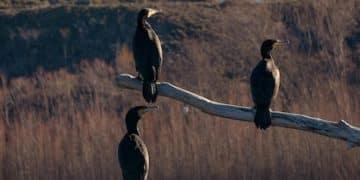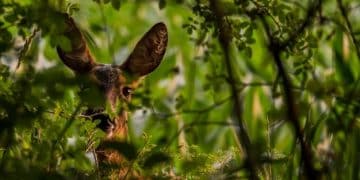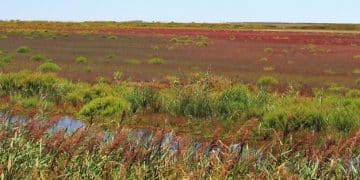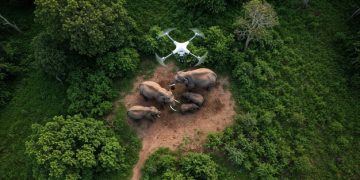Citizen Science: How You Can Help Monitor Wildlife in the US

Citizen scientists significantly contribute to wildlife monitoring programs across the US by collecting valuable data, expanding research reach, and increasing public awareness about conservation efforts.
How Can Citizen Scientists Contribute to Wildlife Monitoring Programs Across the US? The answer is, profoundly. By engaging everyday individuals in data collection, analysis, and reporting, monitoring programs gain a broader reach, and a deeper understanding of wildlife populations and their habitats. Citizen science isn’t just about volunteering; it’s about making a tangible difference in conservation.
Understanding the Role of Citizen Scientists
Citizen scientists are not just casual observers; they are active participants in scientific research. Their involvement is vital for gathering data over broader geographical areas and longer time periods than professional scientists could manage alone. This collaborative approach enhances the scope and effectiveness of wildlife monitoring programs.
Citizen science brings communities closer to wildlife, offering educational opportunities that inspire environmental stewardship. Let’s delve into how these collaborations strengthen conservation.
Expanding Data Collection Reach
One of the primary benefits of citizen science is the expansion of data collection efforts. Volunteers can monitor wildlife in their local areas, providing valuable data on species distribution, abundance, and behavior that would be impossible for researchers to gather single-handedly.
Long-Term Monitoring Initiatives
Many wildlife monitoring programs require long-term data to track population trends and assess the impacts of environmental changes. Citizen scientists play a crucial role in sustaining these initiatives by committing to regular monitoring over extended periods, ensuring consistent data collection.
- 📊 Collecting extensive datasets on species presence and absence.
- 🗺️ Mapping species distribution across different habitats.
- 🐾 Reporting sightings of rare or endangered species.
- 🌦️ Documenting the effects of climate change on wildlife populations.
By extending the reach of monitoring efforts, citizen scientists contribute to more robust and comprehensive datasets, enhancing our understanding of wildlife dynamics and informing conservation strategies.
Specific Examples of Citizen Science Programs
Numerous citizen science programs across the US are making a significant impact on wildlife monitoring. These programs engage volunteers in various activities, from bird counts to tracking mammal movements, each contributing unique and valuable data.
These initiatives not only provide essential data but also foster a deeper connection between people and nature. Let’s look at some notable examples illustrating their effectiveness.
Christmas Bird Count
The Christmas Bird Count (CBC), organized by the National Audubon Society, is one of the oldest and longest-running citizen science projects. Volunteers count birds within designated areas each year, providing valuable data on bird populations and their distribution across North America.
eBird
eBird, managed by the Cornell Lab of Ornithology, is an online platform where birdwatchers can record their bird sightings. This program collects vast amounts of data on bird distribution and abundance, providing valuable insights for researchers and conservationists.
The Lost Ladybug Project
This project invites citizen scientists to find and photograph ladybugs, helping researchers track the populations of native ladybug species and understand why some species are declining.
- 🦉 The Christmas Bird Count monitors long-term trends in bird populations.
- 🦅 eBird provides real-time data on bird distribution and abundance.
- 🐞 The Lost Ladybug Project helps track native ladybug species.
- 🐢 FrogWatch USA monitors frog and toad populations.
Through their targeted efforts, these programs provide crucial data for monitoring specific wildlife populations and addressing conservation challenges.
Tools and Technologies Used in Wildlife Monitoring
Citizen scientists leverage a range of tools and technologies to enhance their monitoring efforts. These tools simplify data collection, improve accuracy, and facilitate efficient data sharing with researchers. From smartphone apps to camera traps, technology plays a key role in modern citizen science.
These advancements empower volunteers to contribute more effectively to wildlife monitoring programs. Let’s explore the most common tools and technologies used.
Smartphone Apps
Smartphone apps are widely used for recording species sightings, taking photos, and collecting environmental data. These apps often include features like GPS tagging, species identification guides, and data submission tools, making data collection simple and accessible.
Camera Traps
Camera traps are motion-activated cameras used to capture images or videos of wildlife. Citizen scientists can deploy and maintain camera traps in various habitats, providing valuable data on mammal populations and their behavior without disturbing the animals.
Online Platforms
Online platforms like iNaturalist and eBird serve as central hubs for citizen science data. These platforms allow volunteers to submit their observations, access data visualization tools, and connect with other citizen scientists and researchers.
By integrating these technologies, citizen scientists can collect high-quality data and contribute meaningfully to our understanding of wildlife populations.
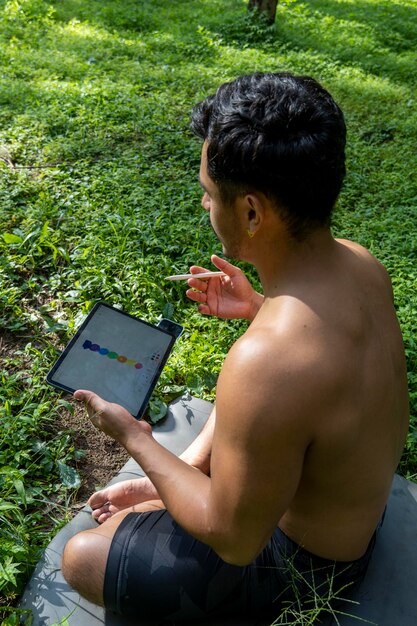
Ensuring Data Quality and Accuracy
Data quality is paramount in any scientific endeavor, and citizen science is no exception. To ensure the reliability of data collected by volunteers, monitoring programs implement various quality control measures, including training, standardized protocols, and data validation processes.
Maintaining high data quality is key to generating credible and actionable insights. Let’s examine the methods used to achieve this.
Training and Standardization
Comprehensive training programs are essential for equipping citizen scientists with the knowledge and skills needed to collect accurate data. Training typically covers species identification, data collection protocols, and proper use of monitoring equipment.
Data Validation
Data validation involves reviewing and verifying the data submitted by citizen scientists to identify and correct errors or inconsistencies. This process may include cross-referencing data with other sources, consulting with experts, and implementing automated data quality checks.
Clear and Straightforward Protocols
Clearly defined protocols are necessary when performing citizen science activities, so the accuracy and reliability of the study remain intact to avoid collecting data that is rendered as useless because activities have been performed incorrectly.
- ✅ Standardized data collection protocols ensure consistency across volunteers.
- 📚 Training workshops enhance volunteers’ skills in species identification and data recording.
- 🔎 Expert review of data submissions validates accuracy.
- 🌐 Online resources provide ongoing support and guidance to participants.
By prioritizing data quality, monitoring programs can ensure that citizen science data is reliable and contributes meaningfully to conservation efforts.
Overcoming Challenges in Citizen Science
While citizen science offers numerous benefits, it also presents challenges. These include recruiting and retaining volunteers, managing large datasets, and addressing potential biases in data collection. Overcoming these challenges is crucial for maximizing the effectiveness of citizen science programs.
Addressing these hurdles ensures the long-term success and impact of citizen science initiatives. Let’s explore these challenges and potential solutions.
Recruiting and Retaining Volunteers
Recruiting and retaining citizen scientists can be challenging, especially for long-term monitoring projects. Effective strategies include offering engaging activities, providing ongoing support and recognition, and fostering a sense of community among volunteers.
Managing Data
The large volume of data generated by citizen science projects can be overwhelming. Robust data management systems are needed to efficiently store, organize, and analyze the data. This includes developing user-friendly databases, implementing automated data processing tools, and ensuring data security.
Addressing Potential Biases in Data Collection
Researchers should ensure that the tools and methods adopted are consistent with scientific integrity, ensuring the study is free of bias of any kind, thus allowing for a transparent, objective review.
- 🤝 Building strong partnerships with local communities to recruit volunteers.
- 🏆 Recognizing and rewarding volunteers for their contributions.
- 📊 Developing user-friendly data management systems.
- 🧐 Implementing rigorous data validation procedures.
By proactively addressing these challenges, citizen science programs can enhance their impact and contribute more effectively to wildlife conservation.

The Future of Citizen Science in Wildlife Conservation
Citizen science is poised to play an even greater role in wildlife conservation in the future. As technology continues to advance and public awareness grows, citizen science programs are becoming more sophisticated, accessible, and impactful.
Embracing innovation and collaboration will be key to unlocking the full potential of citizen science. Let’s consider the future trends and opportunities in this field.
Technological Advancements
Emerging technologies like artificial intelligence (AI) and machine learning are being used to automate data analysis and improve species identification. These tools can help citizen scientists process large datasets more efficiently and accurately, enhancing the quality and usability of their data.
Expanding Public Engagement
Increasing public awareness of citizen science programs and their benefits can drive greater participation and support for conservation efforts. This includes promoting citizen science through social media, educational campaigns, and community outreach events.
AI Integration for Data Analysis
AI can assist with data analysis by accurately predicting models, identifying species and eliminating the need for physical presence through virtual observation.
- 🤖 AI-powered tools automate data analysis and species identification.
- 📱 Mobile apps enhance accessibility and ease of data collection.
- 🌍 Global collaborations expand the reach and impact of citizen science initiatives.
- 🌱 Engaged communities drive greater participation in conservation efforts.
By embracing these advancements and fostering greater collaboration, citizen science can continue to transform wildlife conservation and empower individuals to make a difference.
| Key Point | Brief Description |
|---|---|
| 📊 Data Collection | Citizen scientists expand data collection reach and contribute to long-term monitoring initiatives. |
| 📱 Technology Use | Smartphone apps and camera traps enhance data collection and facilitate efficient data sharing. |
| ✅ Data Quality | Training, standardization, and data validation ensure the reliability of citizen science data. |
| 🤝 Collaboration | Partnerships with local communities and researchers promote effective wildlife conservation. |
FAQ
▼
Citizen science involves public participation in scientific research, where volunteers collaborate with professional scientists to collect and analyze data, and contribute to various stages of a scientific study.
▼
You can get involved by joining citizen science programs like eBird, Christmas Bird Count, or iNaturalist. These programs provide training and resources to help you monitor wildlife in your area.
▼
Citizen scientists utilize a variety of tools, including smartphone apps, camera traps, GPS devices, and online platforms like iNaturalist and eBird to collect and share data about wildlife.
▼
Data quality is ensured through training programs, standardized protocols, data validation processes, and expert review of data submissions to identify and correct errors or inconsistencies.
▼
Citizen science expands data collection reach, enhances long-term monitoring initiatives, and fosters public awareness and engagement, contributing significantly to effective wildlife conservation efforts.
Conclusion
Citizen scientists are invaluable contributors to wildlife monitoring programs across the US. By participating in data collection and analysis, they expand the reach of research efforts and increase public awareness. Embracing technology, ensuring data quality, and addressing challenges will further enhance the role of citizen science in wildlife conservation.

